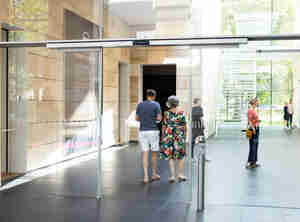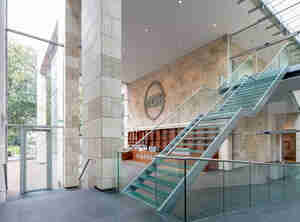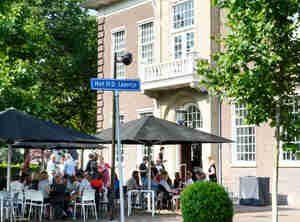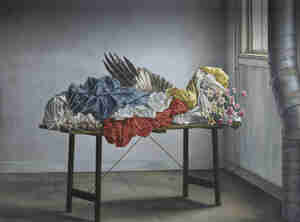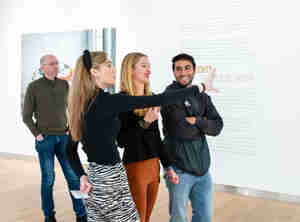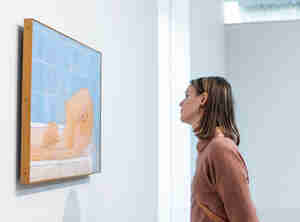- Plan your visit
- See and do
- Collection
- About us

Go back
Lara de Moor
Prop Table (after El Greco), 2018
Prop Table by Lara de Moor (1969) is based on the canvas La Inmaculada Concepción from 1608-1614 (Museo Thyssen, Madrid) by the famous Spanish-Greek painter El Greco (1541-1614). The scene is, as it were, tilted a quarter turn and the figures have disappeared. De Moor kept only the undulating robes
...
of the Virgin Mary, the flowers, and a wing of an angel. Have the angels’ heads (under Mary’s feet in the original work) been turned into onions? Beams of light shine from one of the onions.
De Moor was struck by El Greco’s composition of swirling fabrics that all seem to converge towards a single point. The 17th-century masterpiece expresses surrender to the divine; according to De Moor, El Greco here also honours the intangible and inexplicable. This is something that no longer seems to be of our times since for many people clear scientific explanations are the highest attainable good. By deconstructing this painting, as it were, and displaying the objects on a table as props, Prop Table raises questions such as what does our craving for knowledge yield, what is gained and what is lost?
Artist
Lara de Moor
Title
Prop Table (after El Greco)
Year
2018
Technique
Oil on canvas
Size
152 x 219 cm (h x w)
Type of object
Painting
Copyright
© Lara de Moor
This work is protected by copyright. You need permission from the creator or his heir to download, edit, copy or publish it.
